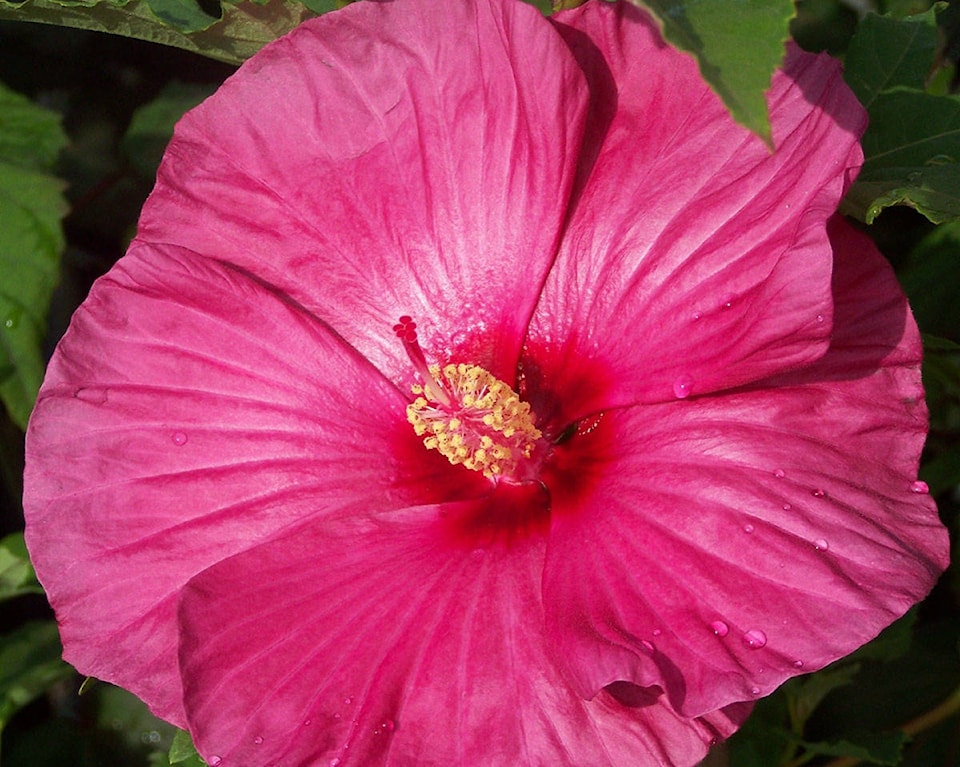It happens every August, customer after customer comes to the nursery asking for Hibiscus, the only problem being that they don’t know which one they want.
That’s when we enter the Twilight Zone of plants, trying to figure out which of the three prominent species they actually fell in love with.
I always start with the question ‘where did you see it,’ and if they answer, ‘while on holiday,’ it is almost always the tropical evergreen species Hibiscus rosa-sinensis – which is quite common in many vacation destinations, such as California, Florida and Hawaii.
Then I have to disappoint them by saying that, while it can be used as an outdoor container specimen during the summer, it has to be brought in as a houseplant for winter, as it is not hardy here.
Those who tell me they saw it growing in a local garden are almost always referring to the hardy deciduous shrub, Hibiscus syriacus, which comes in both double and single-flowered forms in many colours, although not quite as bright or as large as the tropical form.
This species is hardy to Zone 5, but leafs out late in spring and is often still bare or just budding when the rhododendrons are in full bloom.
Since it blossoms on new wood, pruning is done in April, after which it grows and sets flower buds by midsummer.
Here in coastal British Columbia, mature plants generally bloom from late summer to autumn, providing some much needed colour during the heat.
Quite a few of these were lost in the prolonged deep freeze of last winter, but that was the exception as these are rather reliable shrubs provided they have a full sun exposure and good soil drainage.
These can also be top-grafted or trained to a standard or tree form but make poor container specimens, as they dislike the temperature fluctuations in the root zone which cause dieback.
There are dozens of common cultivars to choose from, but your best single-flowered forms include ‘Bluebird’ or ‘Marina’ (blue), ‘Pink Giant’ or ‘Woodbridge’ (pink), ‘Diana’ (pure white) and ‘Red Heart’ (white with red center).
The double forms much resemble carnations, with the most common varieties being ‘Ardens’ (lilac-pink), ‘Blushing Bride’ (pale pink) and the bright rose-pink ‘Collie Mullens’.
Semi-double or anemone flower forms have large blooms with a prominent central ruffle – your best choices here include ‘Lavender Chiffon’, ‘China Chiffon’ and ‘White Chiffon’.
Last on our list of the ever-confusing hibiscus are the perennial forms, such as Hibiscus coccineus and H. moscheutos (or hybrids), both of which are known as Swamp Hibiscus, prefering moist soils and a full sun exposure.
They are hardy to zones 6 and 5, respectively, but are herbaceous perennials, meaning that they die down to the ground in winter and bud from the base of their woody stems.
What is required for some success in coastal B.C. is a site that receives lots of spring sun in order to break dormancy in time for the late summer blooms to make an appearance – when the flowers do finally show they are quite large and impressive, especially those of ‘Lord Baltimore’ (satiny red 10” wide), ‘Fantasia’ (hot pink with a red eye 6-10” wide) or ‘Kopper King’ (coppery-red foliage).
Mulching the base of the stem for winter usually helps to produce more vigorous budding the following spring, resulting in bushier plants and more flowers.
So now that we’ve unmasked the many mysteries of the Hibiscus zone, you should be able to find what you are looking for at your local garden centre.
Mike Lascelle is a local
nursery manager and
gardening author
(hebe_acer@hotmail.com).
